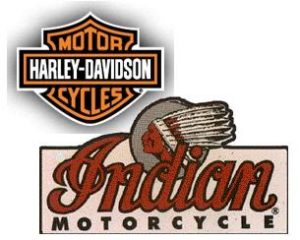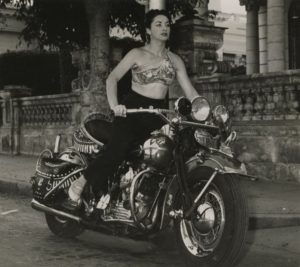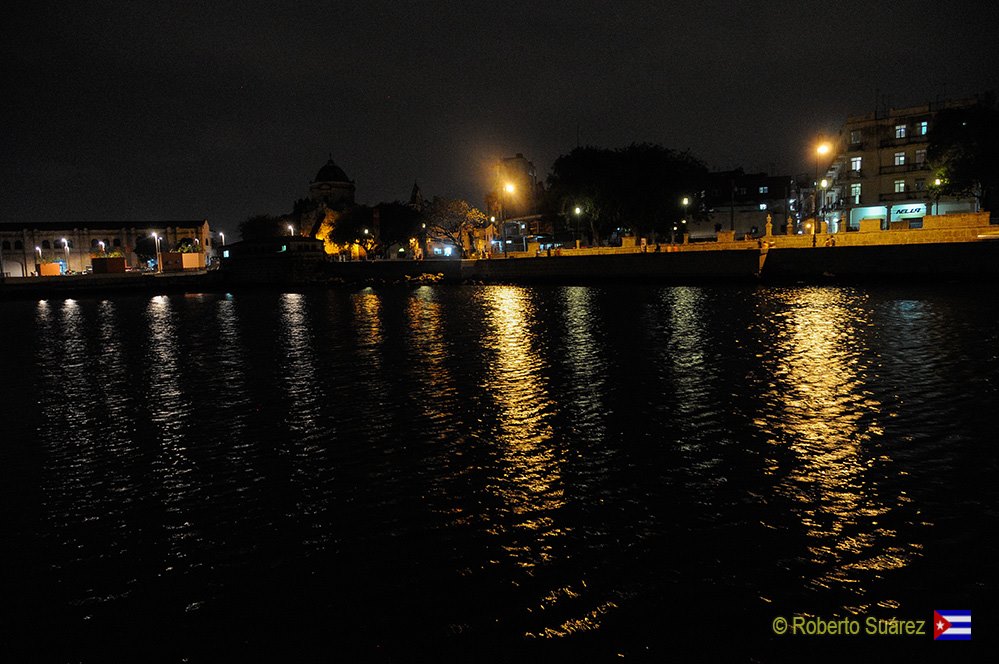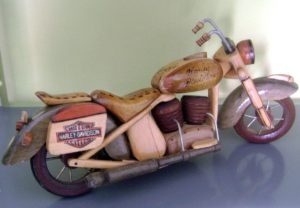![]() HARLEY-DAVIDSON, INDIAN and Motorcycles in CUBA.
HARLEY-DAVIDSON, INDIAN and Motorcycles in CUBA.
The first motorcycle in Cuba arrived in 1899.
The magazine “Figaro” of September 3, the year 1899 refers to the entrance to Havana’s first tricycle brand Prinetti & Stucchi. It had an engine of benzina, patent Prinetti, design simple, easy to maneuver, based on a frame that linked the three wheels or points of support. its engine was placed in the Centre of gravity, this aspect that turned it into a motorcycle stable on any surface. In those moments the DeDion Bouton engine, of French manufacturing, led power market.
Our island, thanks to its privileged position, generated a large transit of goods which aroused between the habaneros fanaticism by the novelty that entered through the port of Havana.
Already in the year 1908 appears the first flotilla of police in Cuba, with bicycle House Fils de Peugeot-engined. In 1917, it appears in Havana, the first official business of motorcycles “Excelsior-Henderson” and expands with devices from the likes of the legendary “Indian”, “Harley-Davidson”. Although there was also an English market, “Van Der m & e Motors”, product of the distribution of other motorcycles coming from Europe, with British engines, that offered strong competition to the products of the North.
The references are running that first 4 Pistons motorcycles entered in Havana around the years 1914 to 1916. Already at that time existed in Havana workshops and people who were dedicated to the work of restoration and maintenance but also to emerging design, machining speed boxes, carbs etc.
Long before the second world war, in Cuba there were three trading houses who were engaged in the trade of motorcycles: the English market-oriented and two American products represented by Mr Luis Bretos who sold the “Harley-Davidson” (HD) and the other established by Mr r. S. Waters that commercialized the “Indian”, taking over the representation of the American market that their ancestors left the Lords Cristian Brú and José Presas precursors of Cuban motorcycling.
In 1922, appears the model “Indian Chief”, one of many designed by Charles B. Franklin, its outstanding engineer. At that time in Cuba, the “Indian” business was located on Lopez and Calzada de Jesus del Monte, no. 252, Tel: 2367, the only dealer of these legendary engines in the island, machines that enjoyed great prestige in the competitions. “Trotamundo bikers Club is founded in 1928. Engaged in excursions around the island.
By devoting its production to the warlike race, the engines of the American “indian”, in 1945, had lost its primacy among the customers of civilians, leaving its nearest competitor “Harley-Davidson” (HD) with the best part of the demand.
With the end of the war fire an infinite number of stockists in Cuba. At this stage of peace, the “Indian” changing of representation for the fourth time on the island and became “Rogers International of Cuba”. In those years the directors of the “Harley-Davidson” in the United States and Cuba had taken a series of measures and their results were apparent in the world of motorcycle riders. In the Decade of the 50, there is a boom of these vehicles.
Gonzalo Bernardo Alonso, Fernández, the “Galician”, is recognized in the world of motorcycling, already had a clientele in his workshop in motorcycles in the quarter of La Ceiba and ran in the street competitions with his “Indian Bonneville” that began to change. Once you have the opportunity of racing engines Vincent (Brack Shadow) of “Van Der m & e Motors” and the grandiose Harley-Davidson the Bretos, who were the fastest engines at that time, giving it “a pipeline” to these machines with his “Indian Custom Racer”, provoking the curiosity of the Rogers International of Cuba, who did not understand the reasons for such success. This event made famous “Galician” and becomes part of the elite races.
The women were not excluded from this movement, our great artist Maria of the angels Santana was an exceptional and dynamic woman who was ahead of all the others to mount a “Harley Davidson” by all the malecon. It was even the first personality from the world of television that made it. Not to mention to Lourdes, the daughter of Luis Bretos, able to master with dexterity to the great “Harley-Davidson”.
Agencies/MemoriasdeCuba/DerubínJácome/InternetPhotos/TheCubanHistory.com
THE CUBAN HISTORY, HOLLYWOOD.
Arnold Varona, Editor.
CUBA PHOTOS.
HARLEY-DAVIDSON, INDIAN Y LAS MOTOCICLETAS EN CUBA.
La Revista “El Fígaro” del 3 de septiembre del año 1899 hace referencia a la entrada a La Habana del primer triciclo marca Prinetti & Stucchi. Tenía un motor de benzina, patente Prinetti, diseño sencillo, fácil de maniobrar, basado en un bastidor que unía las tres ruedas o puntos de apoyo; su motor estaba colocado en el centro de gravedad, aspecto este que lo convertía en una motocicleta estable en cualquier tipo de superficie. En esos momentos el motor DeDion Bouton, de fabricación francesa, lideraba el mercado motorizado.
Nuestra isla, por su posición privilegiada, generaba un gran tránsito de mercancías lo que despertó entre los habaneros un fanatismo por todo lo novedoso que entraba a través del puerto de La Habana.
Ya en el año 1908 aparece la Primera flotilla de la policía en Cuba, con bicicletas con motor de la casa Fils de Peugeot. En 1917, aparece en La Habana, el primer negocio oficial de motocicletas “Excelsior-Henderson” y se expande con aparatos de la talla de las legendarias “Indian”, “Harley-Davidson”. Aunque también existió un mercado inglés, “Van Der Mye Motors”, producto de la distribución de otras motocicletas procedentes de Europa, con motores ingleses, que ofreció una fuerte competencia a los productos del norte.
Las referencias apuntan que las primeras motocicletas de 4 pistones entraron en La Habana alrededor de los años 1914 a 1916. Ya en esa época existían en La Habana talleres y personas que se dedicaban a las labores de restauración y mantenimiento pero también al incipiente diseño, maquinado de cajas de velocidad, carburadores etc.
Mucho antes de iniciarse la segunda Guerra Mundial, en Cuba existían tres casas comerciales que se dedicaban al comercio de las motocicletas: la orientada al mercado inglés y dos a los productos americanos representados por el señor Luis Bretos que vendía los “Harley-Davidson” (HD) y el otro establecido por el señor R. S. Waters que comercializaba los “Indian”, apoderándose de la representación del mercado americano que dejaban sus antecesores, los señores Cristian Brú y José Presas precursores del motociclismo cubano.
En 1922, aparece el modelo “Indian Chief”, uno de los tantos diseñados por Charles B. Franklin, su destacado ingeniero. En aquel momento en Cuba, el negocio de los “Indian” estaba ubicado en López y Calzada de Jesús del Monte, No. 252, teléfono: 2367, único concesionario de estos legendarios motores en la isla, máquinas que gozaban de un gran prestigio en las competencias. En 1928 se funda el Club de motoristas “Trotamundo. Se dedicaban a hacer excursiones por la isla.
Por dedicar su producción a la contienda bélica, los motores del “indian” americano, en 1945, habían perdido su primacía entre los clientes civiles, quedándose su cercano competidor “Harley-Davidson” (HD) con la mejor parte de la demanda.
Con el fin del conflicto bélico renacían infinidad de negociantes en Cuba. En esa etapa de paz, la “Indian” cambiaba de representación por cuarta vez en la isla y se convertía en “Rogers International de Cuba”. Ya en esos años los directivos de los “Harley-Davidson” en Estados Unidos y en Cuba habían tomado una serie de medidas y sus resultados se hicieron evidentes en el mundo de los motociclistas. En la década de los 50 hay un gran auge de estos vehículos.
Gonzalo Bernardo Alonso, Fernández, el “Gallego”, figura reconocida en el mundo del motociclismo, ya tenía una clientela en su taller de motocicletas en el barrio de La Ceiba y corría en las competencias callejeras con su “Indian Bonneville” que comenzaba a modificar. En una ocasión tiene la oportunidad de competir con los motores Vincent (Brack Shadow) de “Van Der Mye Motors” y los grandiosos Harley-Davidson de los Bretos, que eran los motores más rápidos en aquellos momentos, dándole “un tubo” a esas máquinas con su “Indian Custom Racer”, provocando la curiosidad de la Rogers International de Cuba que no comprendía los motivos de tal éxito. Este acontecimiento hace famoso al “gallego” y pasa a formar parte de la elite en las carreras.
Las mujeres no quedaron excluidas de este movimiento, nuestra gran artista María de los Ángeles Santana fue una mujer, excepcional y dinámica, que se adelantó a todas las demás en montar una “Harley Davidson” por todo el malecón. Incluso fue la primera personalidad del mundo televisivo que lo hizo. Sin olvidar a Lourdes, la hija de Luis Bretos, capaz de dominar con destreza a la gran “Harley-Davidson”.
MemoriasDeCuba/Derubin Jacome/InternetPhotos/www.thecubanhistory.com
The Cuban History, Hollywood.
Arnoldo Varona, Editor.











